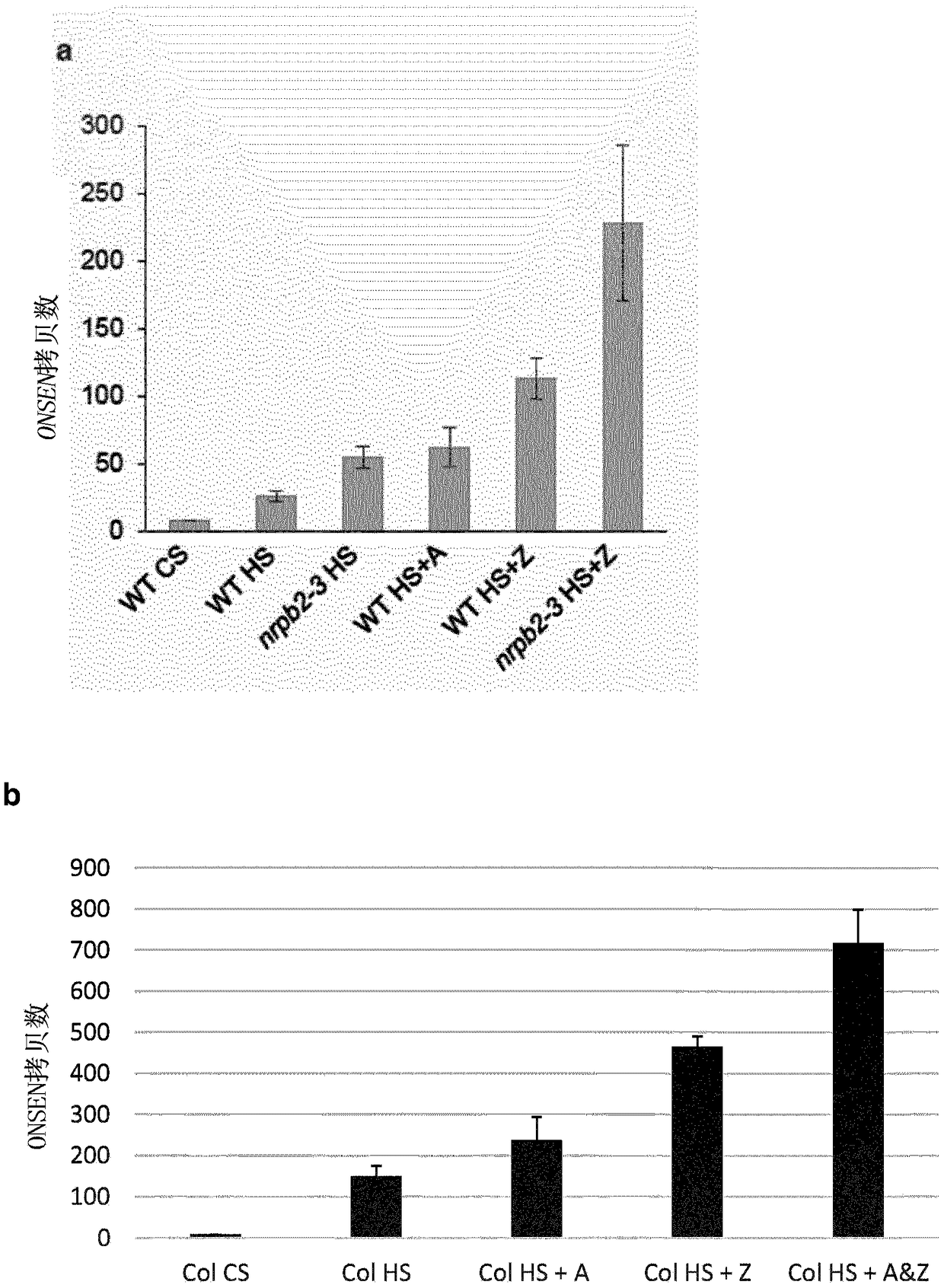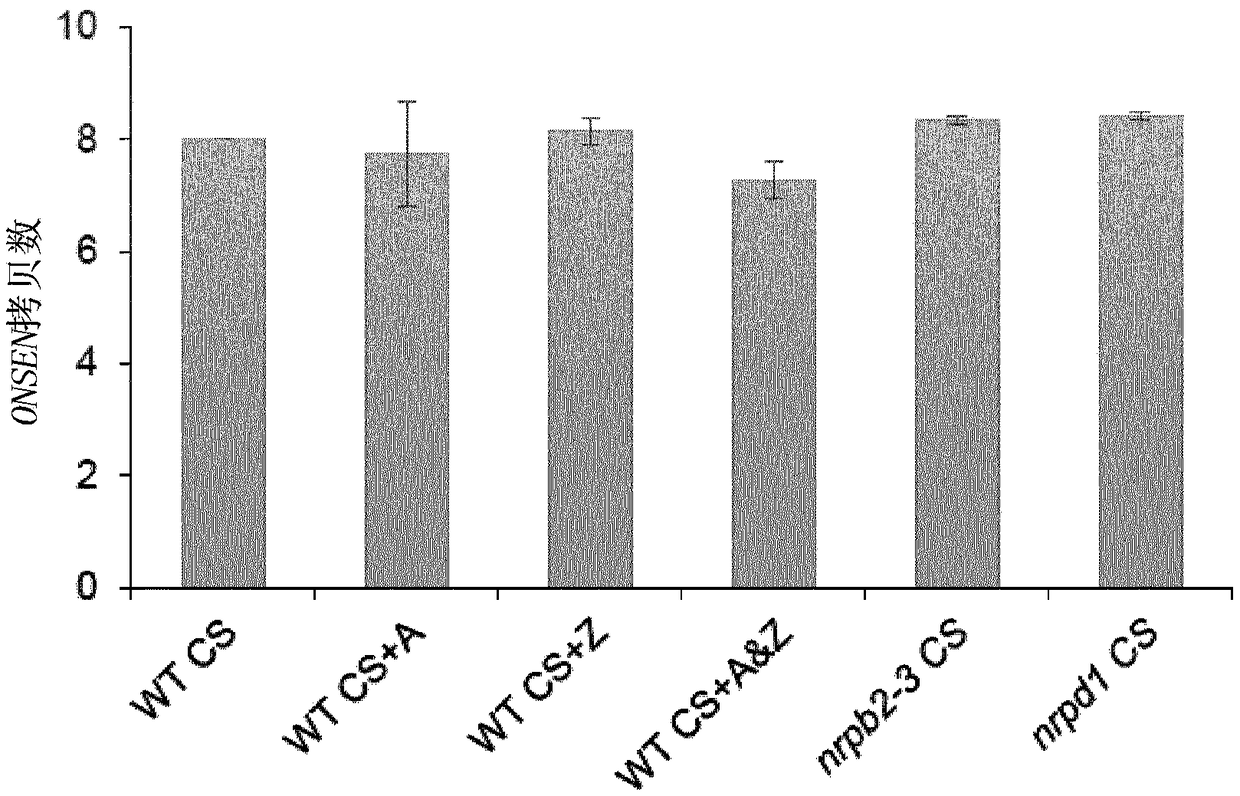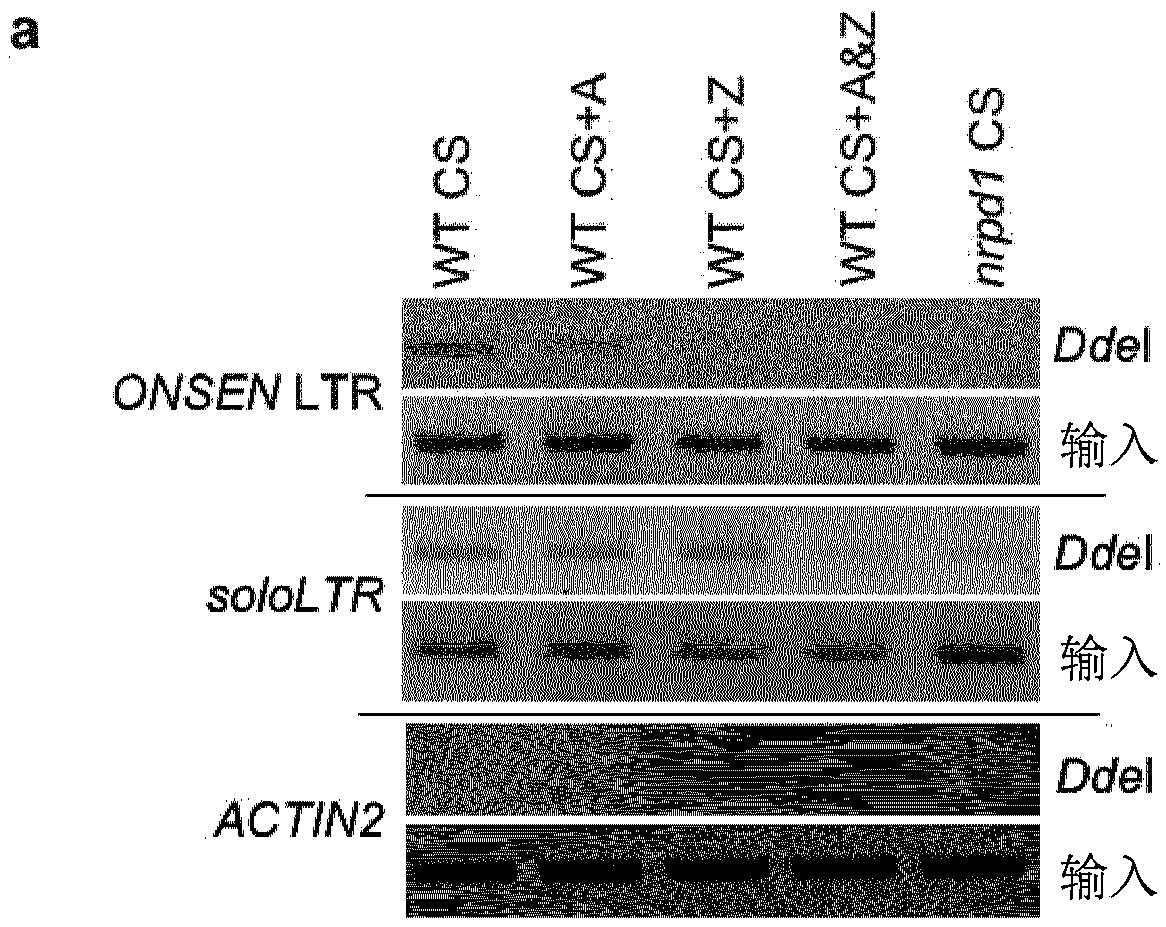Mobilisation of transposable elements to enhance genetic and epigenetic variability in population
A factor and transposition technology, applied in the fields of application, genetic engineering, mutant preparation, etc., can solve the problems of limiting the application and research of transposable elements, low efficiency, and difficulty in obtaining genetic mutations
- Summary
- Abstract
- Description
- Claims
- Application Information
AI Technical Summary
Problems solved by technology
Method used
Image
Examples
Embodiment 1
[0113] To study the role of Pol II on TE mobility, the inventors selected the well-characterized thermo-responsive copia-like ONSEN retrotransposon of Arabidopsis (Ito, H. et al., Nature, 2011, 472:115-119 ). The inventors first tested whether Pol II-deficient plants showed increased TE activity. For this purpose, the inventors utilized the hypomorphic nrpb2-3 mutant allele, which accumulates reduced NRPB2 protein levels (Zeng, B. et al., Genes Dev, 2009, 23:2850-2860) . Using real-time PCR, it was determined that challenge of nrpb2-3 seedlings with heat stress (referred to here as HS) resulted in a moderate increase in ONSEN ecDNA compared to wild type (Fig. 1a). The above results are supported by the observed increase in ONSEN ecDNA after the pharmacological inactivation of Pol II with 5 μg / ml α-amanitin (referred to here as A), α-amanitin does not affect Pol IV or Pol A potent Pol II inhibitor of V (Haag, J.R. et al., Mol Cell, 2012, 48:811-818) ( Figure 1a,b ). RNA p...
Embodiment 2
[0115] To better understand the drug effect at the DNA level leading to increased ONSEN activation after HS, the inventors assessed how the drug affects the long terminal repeat (LTR) at a selected ONSEN endogenous locus (AT1TE12295) DNA methylation at and at an unrelated well-characterized RdDM target (soloLTR). Treatment of plants with A or Z, respectively, has resulted in a decrease in CHH methylation levels at the ONSEN LTR after CS ( Figure 3a ). Combining the two drugs resulted in a loss of DNA methylation comparable to that of nrpd1 mutants. DNA methylation at the soloLTRs showed differential responses to drug treatments, as a decrease in DNA methylation levels was only observed in plants treated with the combination of A and Z. The inventors then examined whether the decrease in CHH methylation coincided with the increase in ONSEN transcript levels immediately after HS by Northern blot. The inventors found that treatment with Z alone had resulted in the highest ONS...
Embodiment 3
[0118]The movement of endogenous TEs in plants has so far been very inefficient, thereby limiting their applications in basic research and plant breeding. ONSEN transposition in HS-treated wild-type plants has not been observed before (Ito, H. et al., Nature, 2011, 472:115-119). Since A&Z drug treatment resulted in increased accumulation of ONSEN ecDNA to a similar extent as in nrpd1, the inventors tested whether combined drug treatment could result in efficient ONSEN mobilization in wild-type plants. First, the inventors assessed by real-time PCR whether (and how often) new ONSEN copies could be detected in progeny of plants subjected to A&Z treatment and heat stress. The inventors found new ONSEN insertions in 29.4% of the F1 pools tested (n=51) and the average copy number of these pools reached up to 52 ( Figure 5 ). The inventors then display ( Figure 4a ), real-time PCR ( Figure 4b ) and sequencing of certain insertions in selected high-copy lines (#3) (Figure 6) c...
PUM
 Login to View More
Login to View More Abstract
Description
Claims
Application Information
 Login to View More
Login to View More - R&D
- Intellectual Property
- Life Sciences
- Materials
- Tech Scout
- Unparalleled Data Quality
- Higher Quality Content
- 60% Fewer Hallucinations
Browse by: Latest US Patents, China's latest patents, Technical Efficacy Thesaurus, Application Domain, Technology Topic, Popular Technical Reports.
© 2025 PatSnap. All rights reserved.Legal|Privacy policy|Modern Slavery Act Transparency Statement|Sitemap|About US| Contact US: help@patsnap.com



